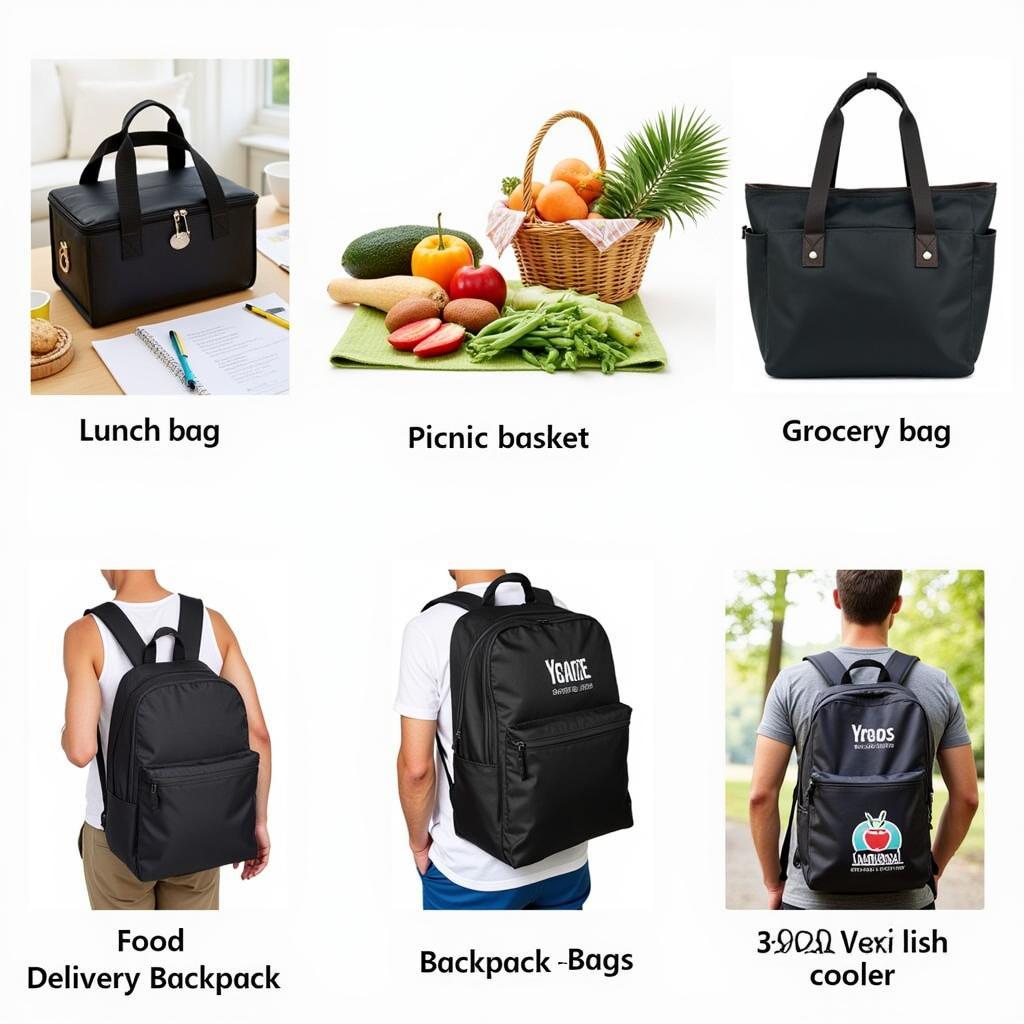Food Insulated Bags are essential for anyone who wants to keep their food and drinks at the perfect temperature. Whether you’re packing a lunch for work, heading out for a picnic, or delivering food, a good insulated bag can make all the difference. From keeping your picnic sandwiches cool on a scorching summer day to ensuring your hot soup stays piping hot on a winter delivery run, these unsung heroes of food transport deserve their time in the spotlight. But with so many options available, choosing the right one can feel overwhelming. This guide will explore everything you need to know about food insulated bags, from the different types and features to tips on how to choose the best one for your needs.
Types of Food Insulated Bags
There’s a surprising variety of food insulated bags designed for different purposes. Understanding these differences can help you make the perfect choice.
Lunch Bags
These are typically smaller, designed for individual meals, and ideal for taking lunch to work or school. They often come with fun designs and are easy to carry.
Picnic Bags
Larger than lunch bags, picnic bags are perfect for family outings and can hold multiple meals and drinks. Many include extra compartments for utensils and napkins.
Grocery Bags
These insulated bags are designed for transporting groceries, particularly frozen or refrigerated items. They are often larger and more durable than lunch or picnic bags.
Food Delivery Bags
Built for durability and temperature retention, these bags are essential for professional food delivery services. Insulated food carrier bag options are crucial for maintaining food quality during transit.
Backpack Coolers
These combine the convenience of a backpack with the temperature control of an insulated bag, ideal for hiking, camping, or festivals.
After a long hike, enjoying a refreshingly chilled drink from your backpack cooler is unbeatable. Similarly, imagine delivering a hot, delicious pizza using an extra large insulated food delivery bags. That’s the power of a good food insulated bag!
 Different Types of Food Insulated Bags
Different Types of Food Insulated Bags
Features to Consider When Choosing a Food Insulated Bag
Not all food insulated bags are created equal. Paying attention to these key features will ensure you get the best performance and longevity.
Insulation Material
The type of insulation affects the bag’s ability to maintain temperature. Common materials include closed-cell foam, PEVA lining, and vacuum insulation.
Size and Capacity
Consider how much food you typically need to carry and choose a bag with appropriate capacity.
Durability and Water Resistance
Look for bags made from sturdy materials that can withstand wear and tear. Water resistance is essential for protecting your food from spills and rain.
Ease of Cleaning
A bag that’s easy to clean will prevent bacterial growth and keep your food safe.
Extra Features
Some bags offer additional features like adjustable straps, extra pockets, and built-in ice packs.
For urban deliveries, insulated bags to keep food hot are essential. Imagine delivering perfectly temperature-controlled meals every time!
How to Care for Your Food Insulated Bag
Proper care will extend the life of your insulated bag and ensure optimal performance.
- Clean the bag regularly with a mild soap and water solution.
- Avoid using harsh chemicals or abrasive cleaners.
- Allow the bag to air dry completely before storing.
- Store the bag in a cool, dry place.
Maintaining a clean bag also helps prevent the spread of foodborne illnesses.
What size food insulated bag do I need?
The size you need depends on how much food you typically carry. Consider a smaller lunch bag for individual meals and a larger picnic or grocery bag for family outings or bulk shopping.
Are food insulated bags waterproof?
Many food insulated bags are water-resistant, protecting your food from spills and rain. However, not all are fully waterproof, so check the product specifications.
Conclusion
Food insulated bags are a valuable investment for anyone who wants to keep their food and drinks at the optimal temperature. By understanding the different types and features, you can choose the perfect food insulated bag for your specific needs. Whether it’s a sleek lunch bag for your daily commute or large insulated bags for food for large gatherings, choosing wisely ensures your food stays fresh and delicious.
FAQ
- How long do food insulated bags keep food cold? The duration varies depending on the bag’s insulation, external temperature, and the use of ice packs, but typically 4-6 hours.
- Can I put hot food in an insulated bag? Yes, many insulated bags can hold both hot and cold food.
- What is the best material for a food insulated bag? Closed-cell foam and vacuum insulation provide excellent temperature retention.
- How do I clean a food insulated bag? Most can be cleaned with mild soap and water.
- Are insulated bags eco-friendly? Yes, using insulated bags can reduce the need for single-use plastic bags and containers.
- Where can I buy a good food insulated bag? They’re available at most supermarkets, department stores, and online retailers.
- What are the best insulated food carrying bags for catering? Insulated food carrying bags designed for catering are often larger and more durable, with features like reinforced handles and multiple compartments.
Common Scenarios
- Scenario 1: Packing a lunch for a day at the beach. Consider a lightweight, waterproof insulated lunch bag with a shoulder strap.
- Scenario 2: Delivering hot meals for a catering business. Opt for a heavy-duty, extra large insulated food delivery bags designed for commercial use.
- Scenario 3: Keeping groceries cold during a long car trip. A large, durable insulated grocery bag with a sturdy handle will be most suitable.
Further Reading
For more information on keeping food hot or cold, check out our other articles on insulated bags to keep food hot.
Contact us for any assistance. Phone: 02437655121, Email: [email protected] or visit us at 3PGH+8R9, ĐT70A, thôn Trung, Bắc Từ Liêm, Hà Nội, Việt Nam. We have a 24/7 customer service team.